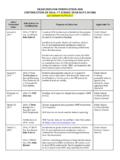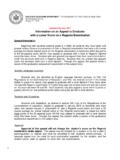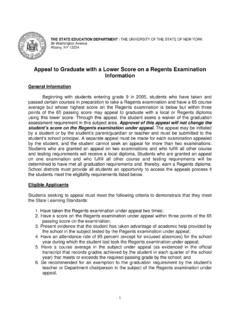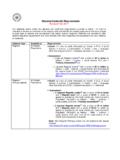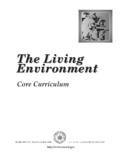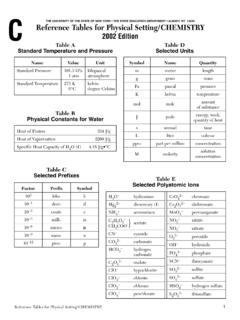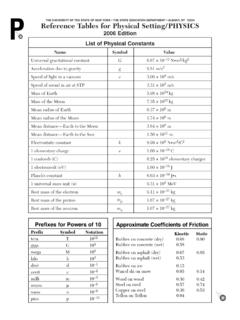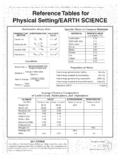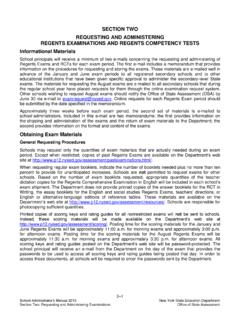Transcription of Fact Sheet: Crumb-Rubber Infilled Synthetic Turf Athletic ...
1 FACT sheet Crumb-Rubber Infilled Synthetic turf Athletic Fields July 2008 PURPOSE There are several kinds of Synthetic turf surfaces ( , surfaces that use a fill material ( infill ) between the blades of artificial grass and those that do not), and Synthetic turf may be installed for different uses ( , single or multiple sport Athletic fields, landscaping, golf applications). The focus of this fact sheet is Athletic fields with crumb rubber Infilled Synthetic turf . This fact sheet was developed to assist people in making decisions about installing or using this kind of Synthetic turf Athletic field . Considerations related to other kinds of Synthetic turf fields are not addressed in this fact sheet .
2 BACKGROUND The first well-publicized use of AstroTurf, a Synthetic turf for Athletic fields, was at the Houston Astrodome in 1966. This first generation of Synthetic turf was essentially a short pile carpet with a foam backing. Since then, design changes have resulted in a greater variety of Synthetic turf Athletic fields. One type of Synthetic turf is fabricated using Synthetic fibers, manufactured to resemble natural grass, and a base material that stabilizes and cushions the playing surface. The fibers are typically made from nylon, polypropylene or polyethylene and are connected to a backing material. The base material, also called infill, consists of one or more granular materials that are worked in between the fibers during the installation process.
3 Commonly used base materials are granulated crumb rubber (usually from used tires), flexible plastic pellets, sand, and rubber -coated sand. A combination of sand and crumb rubber is often used. crumb rubber is produced by grinding used tires. Steel and fiber tire components are removed during the process and the rubber pellets are sorted by size. Pellet sizes ranging from about one-sixteenth to one-quarter inch in diameter are used on Synthetic turf . crumb rubber is typically applied at a rate of two to three pounds per square foot of field surface. HEALTH AND SAFETY CONSIDERATIONS Some potential health and safety considerations related to Synthetic turf have generated public concern. These include: Heat stress Injury Infection Latex allergy Chemical exposure Heat Stress Synthetic turf fields absorb heat, resulting in surface temperatures that are much higher than the temperatures of the surrounding air.
4 In June 2002 at Brigham Young University (BYU) in Utah, the average surface temperature on a Synthetic turf field was reported to be 117 F while the average surface temperatures on natural turf and asphalt were 78 F and 110 F, respectively. A maximum surface temperature of 200 F on the BYU Synthetic turf field was reported. A turfgrass specialist at the University of Missouri reported measuring an air temperature of 138 F at head-level height on the university s Synthetic turf field on a sunny 98 F day. The surface temperature of the field was reported to be 178 F. A study conducted at Penn State University measured surface temperatures on experimental plots of nine different types of Infilled turf .
5 Temperature measurements were made on three occasions. The average air temperatures reported were 79 , 78 , and 85 F. The corresponding average surface temperatures reported for the Synthetic turf plots are 120 , 130 and 146 F. Water can be applied to Synthetic turf to reduce the surface temperatures on warm days. A study at BYU found that watering Synthetic turf lowered the surface temperature from 174 F to 85 F, but the temperature rose to 120 F in five minutes and to 164 F in twenty minutes. A study conducted by Penn State University on experimental Synthetic turf plots examined the effect of watering Synthetic turf on surface temperature. Measurements were made on three occasions. For one monitoring period, surface temperatures ranging from about 130 to 160 F were lowered initially to about 75 F, but increased within 30 minutes to temperatures ranging from about 90 to 120 F, where they remained fairly stable for the three-hour monitoring period.
6 The surface temperatures reported on Synthetic turf fields can get high enough to reach levels of discomfort and may contribute to heat stress among users of the fields. While watering Synthetic turf may reduce surface temperatures, other factors are likely to influence its effectiveness. At the present time, NYSDOH is unaware of any studies that have examined the role of Synthetic turf in contributing to heat stress or that have compared the occurrence of heat stress among athletes playing on natural turf and Synthetic turf . Because of the potential for high temperatures on Infilled Synthetic turf fields, it is important that people who play or work on the fields be provided with adequate warnings regarding the potential for heat stress.
7 People should also be advised to remain hydrated and to seek relief from the heat in shaded areas. The potential for and frequency of high surface temperatures warrant consideration when making decisions about installing and using a Synthetic turf field . Injury There is a common perception that there are more sports injuries on Synthetic than on natural turf Athletic fields. Many factors influence the rate of sports injuries, including the type of playing surface. The many kinds of Synthetic turf surfaces and changes in the turf products over the years complicate the assessment of how the playing surface affects injury rates. Other risk factors have been implicated in injury rates among athletes, in addition to the type of playing surface.
8 These risk factors include level of competition, skill level, age, shoe type, previous injury and rehabilitation, and a number of individual physical characteristics. We identified five studies that compared injury ( , sprains, lacerations, fractures) rates among athletes when playing on Infilled Synthetic turf and natural turf fields. Although the ability of the studies to detect differences in the injury rates was limited by the small number of injuries reported, the studies concluded that there were no major differences in overall injury rates between natural and Infilled Synthetic turf . Although each study found some differences in specific injury types, there was no consistent pattern across the studies.
9 The potential for head injuries from contact with the surfaces has been assessed by determining the ability of the surfaces to absorb impacts. Tests have shown that the force of impact on asphalt surfaces is much higher than the level generally accepted to be associated with serious head injury. The force of impact on many types of natural turf and all types of Synthetic turf tested are below this level. The force of impact on frozen natural turf is typically above the acceptable level. No data are available for the force of impact on frozen Synthetic turf . The abrasiveness of Synthetic turf fibers may contribute to the injury risk among athletes, particularly for abrasions or turf burns. The degree of abrasiveness appears to be dependent on the composition and shape of the turf fibers.
10 A study conducted at Penn State University suggests that Synthetic turf with nylon fibers is more abrasive than Synthetic turf with other types of fibers. Infection Risk Some people have expressed concern that infections, including methicillin-resistant Staphylococcus aureus (MRSA), may be more common among users of Synthetic turf fields than users of natural turf fields. This possibility has not been studied systematically, and no definitive statements can be made about differences in risk between the two surfaces. At least two questions are important in evaluating the risk of infection. Does skin damage occur more frequently on Synthetic turf than natural turf , thus providing a place where infections are more likely to occur?
